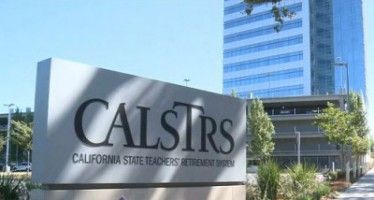Bee stokes phony crime wave
JULY 26, 2010
By STEVEN GREENHUT
In what can only be viewed as an attempt to build public support for the hiring of more park rangers, the Sacramento Bee on July 25 published an overwrought front-page story – complete with two inside-the-A-section jump pages – warning about a crime wave that supposedly is threatening safety at the state’s parks.
[UPDATE: A Bee editorial calls for a fee increase today to pay for more park rangers.]
Crime is hitting record levels. Business owners are bemoaning their “vulnerability” and a former ranger warns the newspaper that “the entire system is teetering on the brink.” Staffing at the ranger system is flat even as the state has added parks to the system. As the Bee puts it, the net result is “crime last year reached record per-capita levels.”
But there’s no reason to be alarmed — unless one is a Bee editor and happens to look closely at the level of alarmist reporting. The series doesn’t document a crime wave so much as it details how the Nanny State criminalizes even the most modest rule-breaking. We don’t see a rash of violence or assault, but the increased willingness of law enforcement to treat smoking, drinking, rafting without life preservers, noise-making and trespassing as crimes, rather than as the normal rule-breaking that has been found at parks since time immemorial.
The clues that this series is nonsense come early. The big front-page photograph shows a park ranger pulling over “a raft crowded with youngsters, none wearing life jackets” at Folsom Lake. The youngsters look like teen-agers or young adults, not vulnerable little kids, and they are hanging onto a large flotation device. The other photo shows a “top-ranking law enforcement officer at Huntington and Bolsa Chica state beaches” confiscating and dumping a small bottle of liquor taken from a middle-aged man.
Nothing the teens were doing seemed particularly dangerous. One has to be a true scold to think of rafting without a life preserver as a crime. Certainly, having a small bottle of liquor is against the park rules, but it hardly amounts to terrifying criminal activity and it makes one wonder why this requires the efforts of a “top-ranking” officer.
Yes, some serious crimes take place at state parks, just as some serious crimes take place wherever people are gathered anywhere in California. But the article strains to find terrible things to report. Its prominent bullet-point list of matters that rangers had to contend with over the last year includes “car surfing” at Folsom Lake, as young daredevils jump off a car roof and into the lake – a stupid and dangerous activity that nevertheless endangers only those who do it. It refers to “grave-robbing” – or, more accurately, people who remove Indian artifacts, such as arrowheads, from a park. (Even the language the Bee uses is designed to hype the problem, given that grabbing an arrowhead, although wrong, hardly amounts to what most people think of as grave robbing.) It points to “illicit sex in parks” and to “The death of a 24-year-old rescue volunteer crushed by his vehicle while responding to an accident.”
Illicit sex – Is it possible to have licit sex in a park? – is a fact of life. The death of the rescue volunteer was tragic, but this was an accident, not the mark of a crime wave. Even the article seems to admit that this is much ado about nothing. Under the heading, “Trespassing leads offenses,” the Bee writes: “The most frequent state park crimes may appear benign but hint at a growing disregard for park rules.” That sounds like something that comes right out of the State Park Peace Officers Association press room.
One of the big increases in crime – park rangers reported 35 incidents of marijuana cultivation on state parks versus 30 incidents 11 years ago. And so it goes … park rangers extinguish “illegal campfires,” try to clamp down excessive noise, prosecute nudists who, by the way, had long been allowed to do their thing at a small section of San Onofre state park. In one example of this crime wave, an officer caught someone smoking marijuana, only to find that the marijuana was legal given that the person had a card to legally smoke the stuff. Good grief.
The Bee described an assault on the “coast’s sensitive tide pools” – i.e., people who take starfish or snails back with them. In a normal day and age, kids would be urged not to take shells from the beach, but in this day and age these are considered serious environmental crimes that demand an increase in law enforcement staffing.
Actually, the article finds that there are surprisingly few serious crimes that take place at California’s state parks. Mostly, the Bee and its friends in the law enforcement unions want more “boots on the ground” to catch average folks who might decide to have a bonfire and drink some wine. The article also champions the volunteer park busybodies who approach and correct park-goers who aren’t following the rules. Perhaps this is indicative of the new California. The old California championed “doing your own thing” and enjoying the outdoor lifestyle. But nowadays everything here is about laws, rules and regulations – why should the lifestyle at beaches, mountains and lakes be any different from any other aspect of life in this highly taxed, carefully monitored and absurdly regulated state?
The article points to parks stressed to the breaking point, but then argues that “crime drives down usage,” which is like that old Yogi Berra complaint about a restaurant that is so crowded that no one goes there any more.
By the Bee’s logic, I might as well declare that a crime wave has descended on my neighborhood given that the neighbors regularly drive five miles over the speed limit, jaywalk, drink beer while they walk the dog and make a little noise during pool parties. Somehow, in the spirit of individualism and freedom, I prefer to deal with these matters on my own rather than hire additional police officers to patrol the street, hand out tickets and look around in our yards.
I live by Folsom Lake and like to go floating on the American River. The vast majority of people I see there are well behaved and safe, even if they occasionally break a minor rule or two. Last time I went to the river, we all had to wait while a surly park ranger – how much is he paid and what is his pension? – searched our stuff to make sure no one was bringing along a six pack of beer. If someone snuck in the beer that would be against the park rules, but does it really point to a crime wave?
If anything, it’s becoming increasingly difficult for Californians to enjoy themselves without government snoopers making sure we don’t do anything fun. Go to any park and the list of “don’ts” is increasingly long. This is more a story of the criminalization of generally harmless recreational behavior and of the security-state mentality – which sees more police, more cameras, more searches and more rules as the answer to everything, lest anyone do anything wrong.
As I wrote in an Orange County Register editorial a few years ago, “Southern California still has the international reputation as being a fun-in-the-sun place. The reality has been whittled away by government officials and police agencies that have been cracking down on life’s innocent pleasures. The stories abound. Beaches now are mostly smoke-free zones. Don’t you dare try to enjoy some wine at the beach on a quiet evening! Cities have tried to get rid of beach fire rings. We heard one story about police staking out a local park July Fourth and ticketing people watching fireworks, given that parks are supposed to be closed after dark.”
A broken rule is hardly a crime wave. It’s too bad the Bee failed to make that distinction.
Related Articles
TSA Goons Assault Sen. Rand Paul
John Seiler: The centralized tyranny in the United States has gone too far. It now is assaulting Sen. Rand Paul,
AD 44: ‘Herculean’ support flows to McCoy
What a difference a day makes. On Friday, CalWatchdog.com suggested Rob McCoy, the Republican candidate in the contested 44th Assembly District,
School districts struggling despite huge funding increase
California’s funding of education has gone from $50.4 billion in the fiscal year that ended in 2012 to $74.5 billion




